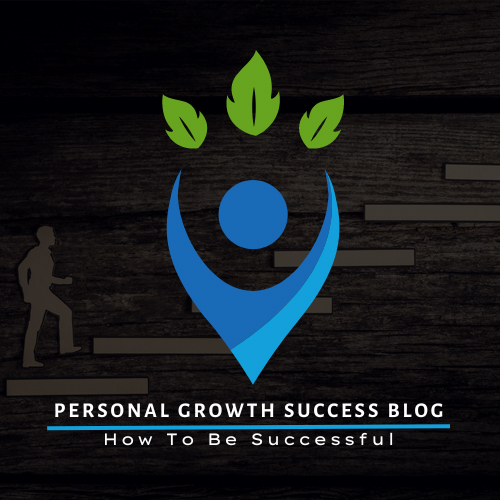
Do you ever wonder why successful people possess an optimistic outlook even when facing difficult situations? It’s because they have cultivated a growth mindset – a mental attitude that embraces challenges as opportunities for personal and professional growth. The power of positive thinking and the cultivation of a growth mindset have been studied extensively by leading institutions like Stanford University, who believe that this approach to life and work play a critical role in achieving business success, personal relationships, and physical health. To develop a growth mindset, one must learn effective strategies such as positive self-talk, loving-kindness meditation, and embracing experiences as opportunities for learning. In this article, we will explore the power of positive thinking and provide an overview of key strategies for developing a growth mindset for personal and professional growth.

1. Focus on the Present Moment and Avoid Dwelling on Past Mistakes or Future Uncertainties
A powerful technique for cultivating a growth mindset is to focus on the present moment and avoid dwelling on past mistakes or future uncertainties. Mindfulness is the practice of staying in the here and now, without being distracted by negative thoughts about the past or future. It is a key component of positive thinking, and has been shown to have numerous health benefits.
When we focus too much on the past, we can become mired in negative emotions like regret and guilt. Similarly, when we worry too much about the future, we can become overwhelmed with anxiety and fear. By staying in the present moment, however, we can enjoy a sense of clarity, calm, and peace of mind.
Practicing mindfulness can help us break free from negative thought patterns and live more fully in the present. By being fully engaged in the present, we give ourselves the opportunity to experience life as it happens, rather than being distracted by regrets about the past or anxieties about the future. This can lead to reduced stress and anxiety, increased clarity and focus, and the ability to fully appreciate the present moment.
2. Be Grateful by Regularly Appreciating the Good Things in Life
Practicing gratitude is a technique that can cultivate a positive mindset by shifting focus from negative thoughts and emotions to appreciation of the good things in life. By regularly appreciating the good things in life, we can shift our focus from negative thoughts and emotions towards positivity. This can lead to a more optimistic outlook on life, improved mental health, and better relationships with others.
One way to practice gratitude is by keeping a gratitude journal or writing gratitude lists. This helps strengthen the skill of recognizing positive aspects of daily life, no matter how small they may seem. By intentionally focusing on the good, we can train our brains to seek out the positive and reduce negative thinking patterns.
To further enhance this practice, you can try using the “Why I’m Grateful” worksheet. This worksheet includes prompts to help focus on the good things in life, such as family, friends, personal characteristics, and opportunities for personal growth. By reflecting on these prompts, you can gain a deeper appreciation for the positive aspects of your life and develop a more gratitude-focused mindset.
3. Embrace Challenges and Learn From Failures to Develop a Growth Mindset
To develop a growth mindset, individuals must accept and learn from challenges and failures, seeing them as chances for personal growth and progress instead of obstacles to achieving success. By adopting this mindset, individuals can increase their chances of achieving their goals and reaching their full potential.
Effective strategies for embracing challenges and learning from failures include reframing negative self-talk, seeking out feedback and criticism, and reflecting on failures to identify areas for improvement. Reframing negative self-talk involves rephrasing negative thoughts into positive affirmations. For example, instead of thinking “I can’t do this,” individuals can reframe the thought as “I may struggle, but I can learn and improve.”
Seeking out feedback and criticism from others is also crucial for developing a growth mindset. Feedback can provide valuable insights into areas for improvement and help individuals identify blind spots in their thinking. Similarly, reflecting on failures can help individuals identify areas for growth and development. By viewing failures as opportunities for learning, individuals can develop resilience and persistence, which are essential qualities for achieving success.
4. Use Positive Affirmations to Reinforce Positive Self-talk and Boost Confidence
Positive affirmations are powerful tools for cultivating a positive mindset and improving self-talk. They are phrases that are repeated regularly to reinforce positive beliefs and boost confidence. Examples of positive affirmations include “I am worthy of love and respect,” “I am capable of achieving my goals,” and “I trust in my abilities to overcome challenges and succeed.” It is essential to choose affirmations that resonate with the individual and to repeat them regularly throughout the day.
Studies have shown that positive affirmations can have a positive impact on mental health and well-being. A study conducted by James Cook University found that repeated affirmations can increase self-esteem and reduce symptoms of anxiety and depression. By using positive affirmations regularly, individuals can rewire their thinking patterns and develop a more optimistic outlook on life.
It is crucial to use positive language in speaking, writing, and thinking. Negative self-talk can be damaging to one’s self-esteem and can hinder personal growth and development. By using positive affirmations and avoiding negative self-talk, individuals can develop a growth mindset and increase their confidence in their abilities. Consistent use of positive affirmations can lead to a more positive and fulfilling life.
5. Surround Oneself with Positive Influences
Surrounding ourselves with positive influences is crucial in cultivating positivity and a growth mindset. The people and activities we engage with on a daily basis can heavily impact our thoughts, attitudes, and beliefs. Therefore, it’s essential to prioritize relationships and activities that uplift and inspire us.
Supportive friends and family members can be excellent positive influences. They can encourage and motivate us, provide a listening ear during difficult times, and celebrate our successes. In addition, engaging in uplifting activities like practicing a hobby, listening to music, or spending time in nature can help us find joy and inspiration in everyday life. Furthermore, visiting inspiring physical locations such as museums, art galleries, or parks can stimulate creativity and ignite a positive outlook.
It’s essential to choose a social environment that motivates us to grow and achieve our goals. Spending time with individuals who have a similar positive mindset can inspire us to do better and reach our full potential. Joining clubs or groups with similar interests can also open doors to new experiences and build new relationships. Volunteering for a cause we care about is another way to contribute to our community and immerse ourselves in positive interactions.
6. Practice Visualization Techniques to Imagine Achieving Goals and Success
Visualization is a powerful technique that can help individuals achieve their goals and experience success. It involves creating a mental image of a desired outcome and imagining oneself already experiencing that outcome. When visualizing, it’s important to be specific and detailed, making the visualization as vivid and real as possible. Using positive emotions like excitement, gratitude, and joy can enhance the experience and make it more effective.
Writing down goals in a present-tense format, as if they have already been achieved, is another effective technique. This exercise helps clarify vision and creates focus by providing a clear picture of what success looks like. It also reinforces the belief that the desired outcome is achievable and can motivate individuals to take action towards achieving their goals.
Practicing visualization techniques and regularly reviewing written goals can help individuals maintain focus and stay motivated towards their success. With consistent effort and a positive mindset, visualization can be a powerful tool for achieving one’s dreams and aspirations.
7. Set Realistic Goals to Stay Motivated and Committed
Setting realistic goals is a crucial step towards achieving success in any aspect of life. When we create attainable goals, we are more likely to stay motivated and committed towards achieving them. By setting realistic goals, we can avoid setting ourselves up for disappointment and frustration and instead, experience a sense of accomplishment and satisfaction.
It is important to ensure that the goals we set are challenging but achievable within a reasonable timeframe and with the right resources. Setting clear and meaningful long-term goals can give us direction and help us stay focused on what really matters. When we have a clear vision of what we want to achieve, we can prioritize our efforts and avoid wasting time on things that won’t contribute to achieving our goals.
Breaking down big goals into smaller milestones can help us track our progress and ensure that each milestone is achievable. This approach not only helps in staying motivated, but also ensures that we don’t get overwhelmed by the enormity of our goals. Celebrating each milestone can also provide a sense of accomplishment and contribute positively to our self-confidence.
8. Use Mindfulness Techniques
In cultivating a growth mindset, mindfulness can play a critical role. Mindfulness refers to the practice of being fully present and engaged in the current moment, with a non-judgmental and accepting attitude towards our thoughts and emotions. This awareness can help us identify our limiting beliefs and negative self-talk that may be holding us back from achieving our goals.
Mindfulness techniques such as meditation, body scanning, and breathing exercises can be practiced daily to develop mindfulness skills. Meditation involves focusing our attention on a particular object or sensation, such as our breath, and observing any thoughts or emotions that may arise without judgment. Body scanning involves paying attention to the physical sensations in different parts of our body. Breathing exercises can also help us become more aware of our breath and cultivate a sense of calm and relaxation.
Loving-kindness meditation, in particular, can help us generate more positive thoughts and emotions towards ourselves and others. This practice involves focusing our attention on sending love, kindness, and compassion to ourselves and others. By cultivating positive emotions, we can break free from negative thought patterns and limiting beliefs, and develop a more optimistic outlook on life.
9. Cultivate a Sense of Optimism and Hopefulness by Focusing on Positive Outcomes and Possibilities
Cultivating a sense of optimism and hopefulness is a powerful tool for developing a positive mindset. By focusing on positive outcomes and possibilities instead of dwelling on negative thoughts and emotions, we can experience numerous benefits such as increased resilience and reduced stress. Optimism has been linked to better physical health, happier personal relationships, and greater success in achieving goals.
To develop a more optimistic outlook, it can be helpful to practice gratitude and recognize the good in our lives, even during difficult times. By taking the time to appreciate what we have, we can shift our mindset towards positivity and hopefulness. Setting manageable goals and celebrating progress can also foster a sense of growth and achievement, encouraging us to focus on what is possible rather than what is not.
It’s important to remember that cultivating optimism does not mean ignoring negative situations or emotions, but rather finding ways to approach challenges with a growth mindset and recognize opportunities for growth and learning. By giving ourselves permission to make mistakes and learn from them, we can develop a stronger sense of resilience and hope for the future. In this way, focusing on positive outcomes and possibilities can help us develop a more positive and empowered mindset, leading to improved well-being and greater success in all areas of life.
10. Embrace Change and Adaptability as a Means for Personal and Professional Growth
Embracing change and adaptability is essential for personal and professional growth. Change can be difficult, but it also presents numerous opportunities for learning and development. Having a growth mindset can increase a person’s willingness to embrace opportunities. A growth mindset means believing that with effort and persistence, skills and intelligence can improve. People who have a growth mindset view challenges and obstacles as ways to learn and progress, instead of setbacks.
Having a growth mindset allows individuals to approach change with a sense of curiosity and excitement. Instead of resisting change, they welcome it as a chance to learn and grow. Effective strategies for cultivating adaptability include seeking out new experiences, being open to constructive feedback, and embracing uncertainty. By seeking out new experiences, individuals can broaden their perspectives and develop new skills. Being open to constructive feedback can also help individuals identify areas for improvement and develop a growth mindset. Embracing uncertainty can be challenging, but it can also foster creativity and innovation.
In a culture of growth mindset, individuals and organizations actively seek out opportunities for growth and learning. This culture recognizes that growth and development are ongoing processes that require effort and dedication. It encourages individuals to take on challenges and view them as opportunities for growth. In such a culture, employees are given the tools and resources they need to develop and succeed. This approach enables individuals and organizations to adapt to new challenges and changes more easily, resulting in greater personal and professional growth. By embracing change and adaptability and fostering a culture of growth mindset, individuals and organizations can achieve their full potential.

Conclusion
In conclusion, cultivating a growth mindset requires consistent effort and dedication, but the potential for personal transformation and success is well worth it. Seeking out new experiences, being open to constructive feedback, and embracing uncertainty are practical techniques with applications in both personal and professional settings. By consistently implementing these strategies, individuals can develop a sense of curiosity and excitement towards change, foster creativity and innovation, and identify areas for improvement. With a growth mindset, individuals can approach difficult situations with optimism, view setbacks as opportunities for growth, and achieve lasting personal and professional success.







